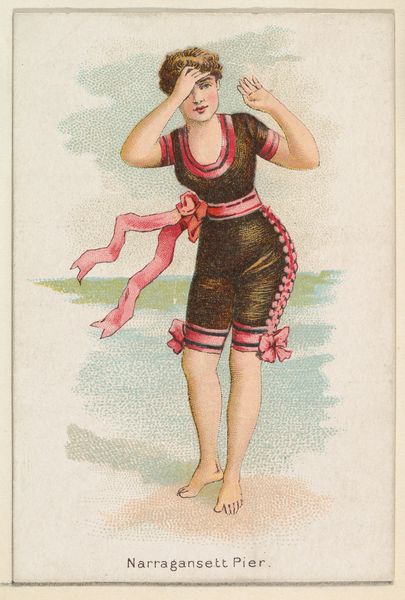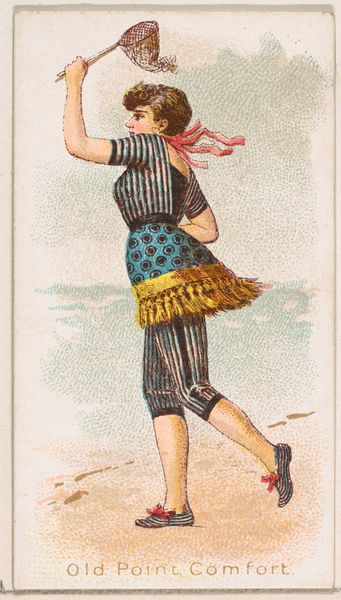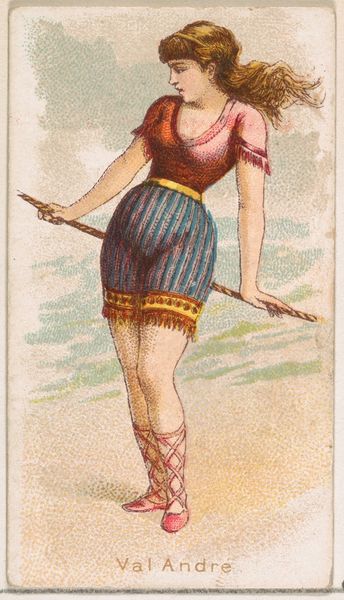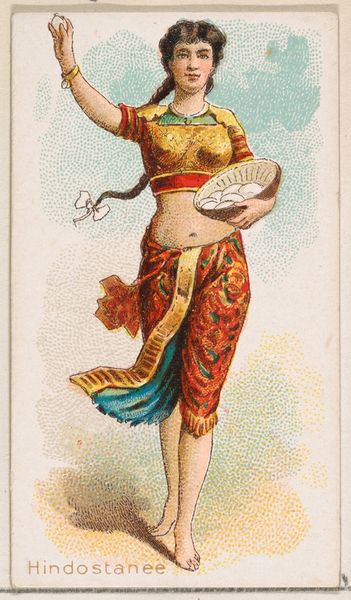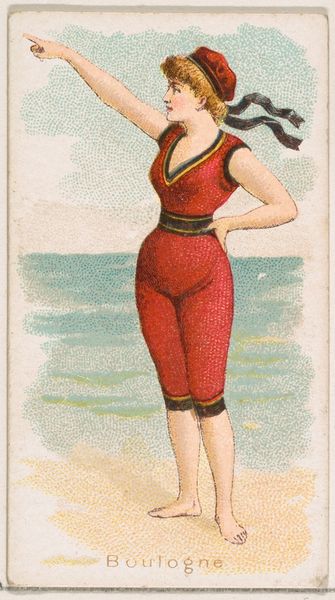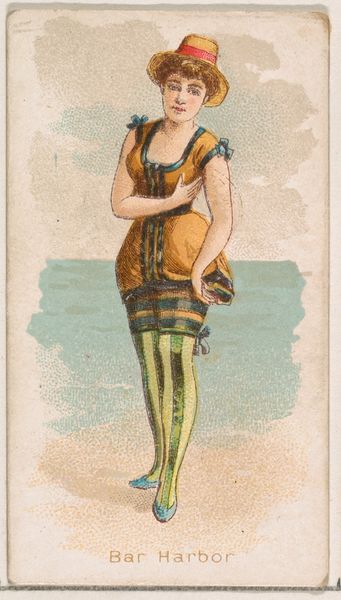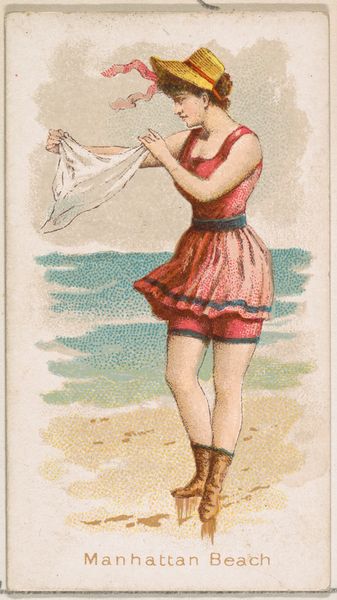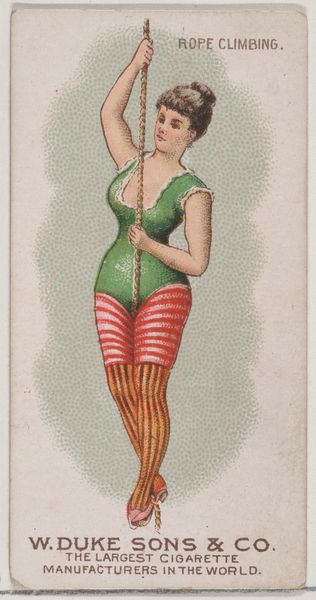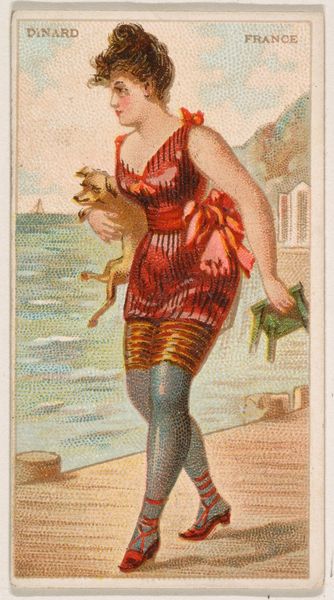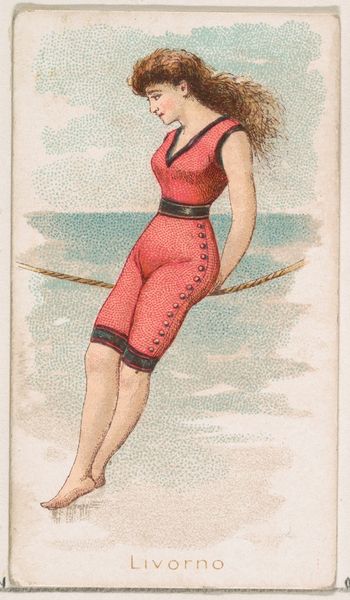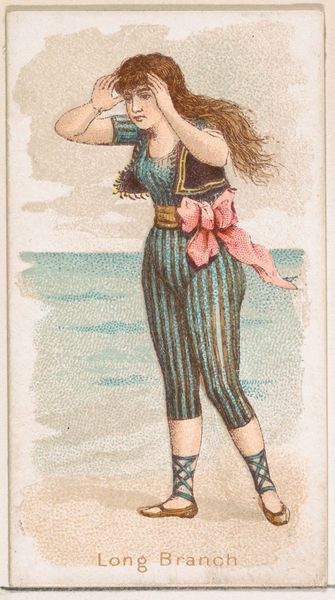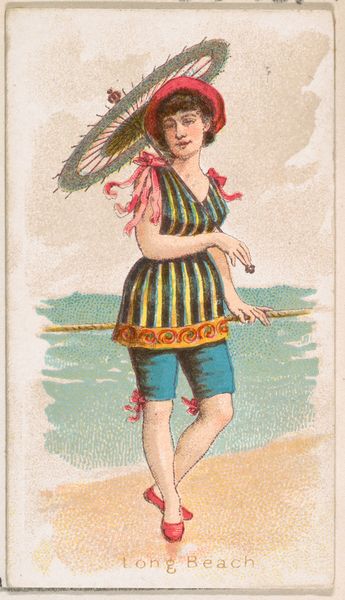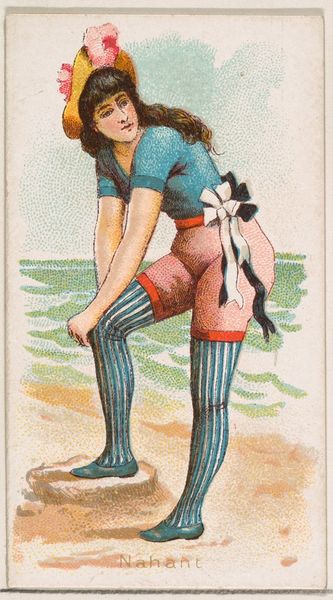
Narragansett Pier, from the Fancy Bathers series (N187) issued by Wm. S. Kimball & Co. 1889
0:00
0:00
drawing, coloured-pencil, print
#
portrait
#
drawing
#
coloured-pencil
# print
#
caricature
#
caricature
#
figuration
#
coloured pencil
#
genre-painting
Dimensions: Sheet: 2 11/16 × 1 1/2 in. (6.9 × 3.8 cm)
Copyright: Public Domain
Curator: This is an advertisement piece for William S. Kimball & Company from 1889, titled “Narragansett Pier, from the Fancy Bathers series,” and it depicts a woman on a beach in a swimming costume. It’s rendered with coloured pencils, offering a glimpse into late 19th-century leisure and consumer culture. Editor: My first impression is that the rendering is fascinatingly awkward and sweet; it’s full of conflicting cues between the rather bulky bathing suit and these incredibly dainty ribbon details that feel so contradictory. It almost becomes a kind of caricature, right? Curator: Precisely. This “fancy bather” isn't just a portrait; it reflects idealized femininity within a rapidly changing social context. Narragansett Pier, Rhode Island, was known as a playground for the upper class, and such images would circulate through trade cards meant to evoke that kind of lifestyle. It projects a sort of aspirational image, even with the potentially absurd design of the bathing costume. Editor: Let's discuss the form here, it seems significant. Her raised arm shading her eyes acts as a clear directional cue that leads the viewer to the open, light horizon beyond. How do you read the emotional tone given this composition? Curator: The gesture of shielding the eyes does suggest expectation, perhaps longing. Simultaneously, though, the figure also invites—the other arm gesturing almost in a beckoning manner. But I would be more inclined to examine the period and what this woman symbolized to the changing perceptions of a female role in the era. Were her actions perceived as defiant, and what did this do to her sense of identity at that time? The bathing suit also alludes to a change in mores; she is partially covered, and partially exposed, so to speak. Editor: That's intriguing. Seeing her partially shaded expression in the water only now intensifies the semiotic puzzle of visibility and veiling here. So the very nature of representation within a commodity item raises further interpretative issues about intent, influence, and, as you suggest, cultural expectations of that era. Curator: Ultimately, this is just a humble piece, designed to promote products, yet when considered from symbolic angles and social considerations, these kinds of works provide useful portals to understanding and deconstructing collective desires, ideals, and societal projections in a time of major transformations. Editor: I think the strength of a piece such as this relies upon the way the visual tension is translated through compositional methods. As such, an advertisement such as this serves as a key for reading our past's hidden ideologies.
Comments
No comments
Be the first to comment and join the conversation on the ultimate creative platform.
